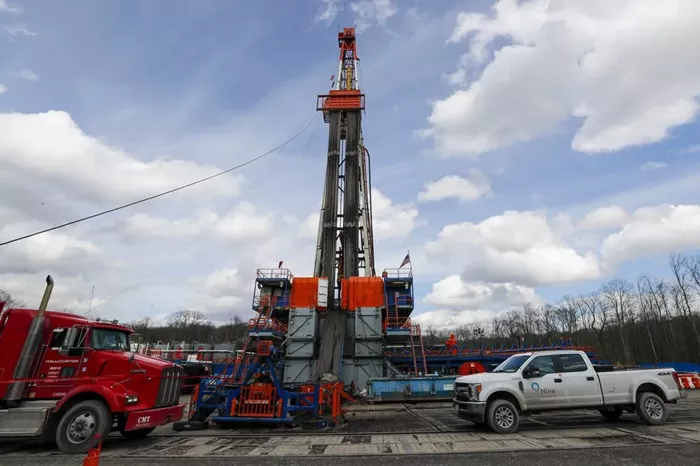Natural gas is primarily composed of methane, a potent greenhouse gas. The extraction and production processes for natural gas, including hydraulic fracturing (fracking), present numerous environmental challenges. While natural gas burns cleaner than other fossil fuels, the activities involved in its extraction can lead to significant environmental degradation. This article investigates the negative environmental consequences of natural gas drilling, providing insights into its impact on air quality, water sources, habitats, and the broader climate.
Air Quality Impacts
Emissions from Drilling Operations
Natural gas drilling involves various processes that release pollutants into the air. During drilling, equipment and machinery emit volatile organic compounds (VOCs), nitrogen oxides (NOx), and particulate matter. These emissions can contribute to the formation of ground-level ozone, which poses health risks, particularly for vulnerable populations.
Methane Leaks
Methane is a significant component of natural gas. While it is less harmful than carbon dioxide in terms of immediate health effects, it is much more effective at trapping heat in the atmosphere. Methane leaks can occur at various stages of production, from extraction to transportation. Studies indicate that even small leaks can have substantial impacts on greenhouse gas emissions, undermining the perceived benefits of natural gas as a cleaner energy source.
Health Risks
The pollutants emitted from natural gas drilling can lead to respiratory issues and other health problems. Communities located near drilling sites often report higher instances of asthma and other respiratory illnesses. Long-term exposure to these pollutants can result in serious health complications, highlighting the need for stricter regulations and monitoring.
See also: How Is Natural Gas Extracted?
Water Pollution Risks
Contamination of Groundwater
One of the most concerning environmental impacts of natural gas drilling is the potential for groundwater contamination. Fracking involves injecting a mixture of water, sand, and chemicals into the ground to release gas trapped in rock formations. Some of these chemicals can seep into nearby water supplies, posing health risks to communities reliant on groundwater for drinking.
Surface Water Contamination
In addition to groundwater concerns, natural gas drilling can lead to surface water contamination. Spills and leaks from drilling sites can introduce harmful substances into rivers, lakes, and streams. This contamination can disrupt aquatic ecosystems and pose risks to wildlife and human health.
Wastewater Management
The disposal of wastewater from fracking operations is another significant issue. Wastewater can contain high levels of salts, heavy metals, and other pollutants. Improper disposal methods, such as dumping into rivers or inadequate treatment, can further exacerbate water quality issues.
Habitat Disruption
Land Use Changes
Natural gas drilling requires significant land for drilling sites, access roads, and infrastructure. This land use change can fragment habitats, making it difficult for wildlife to thrive. The construction and operation of drilling sites can lead to habitat loss, which can have lasting impacts on local ecosystems.
Impact on Biodiversity
Habitat disruption from natural gas drilling can lead to declines in biodiversity. Species that rely on specific habitats may struggle to survive as their environments change. This decline in biodiversity can disrupt food webs and lead to further ecological imbalances.
Noise and Light Pollution
Drilling operations generate considerable noise and light, which can disturb wildlife. Many species rely on natural light and sound patterns for communication, mating, and foraging. Increased noise and light pollution can disrupt these behaviors, leading to reduced populations over time.
Climate Change Considerations
Greenhouse Gas Emissions
While natural gas burns cleaner than coal or oil, its extraction and transportation often involve significant greenhouse gas emissions. The release of methane during these processes can counteract the benefits of using natural gas as a bridge fuel towards cleaner energy sources.
Life Cycle Analysis
A comprehensive life cycle analysis of natural gas shows that when considering all emissions from extraction, production, and consumption, the environmental benefits are less clear-cut. This analysis highlights the importance of evaluating the full scope of natural gas’s environmental impact.
Transition to Renewable Energy
As the world seeks to transition to renewable energy sources, the continued reliance on natural gas can delay this shift. Investment in natural gas infrastructure may divert resources away from developing and deploying truly renewable energy technologies, such as solar and wind.
Conclusion
Natural gas drilling presents a complex array of environmental challenges. While it may offer some advantages over more polluting fossil fuels, the impacts on air quality, water resources, habitat, and climate change cannot be overlooked. As society grapples with the urgent need to address climate change, it is crucial to critically assess the role of natural gas in our energy future. Moving towards cleaner, sustainable energy solutions is essential for protecting both the environment and public health.
Related topic:
Where Natural Gas Is Found and How It Is Obtained?

